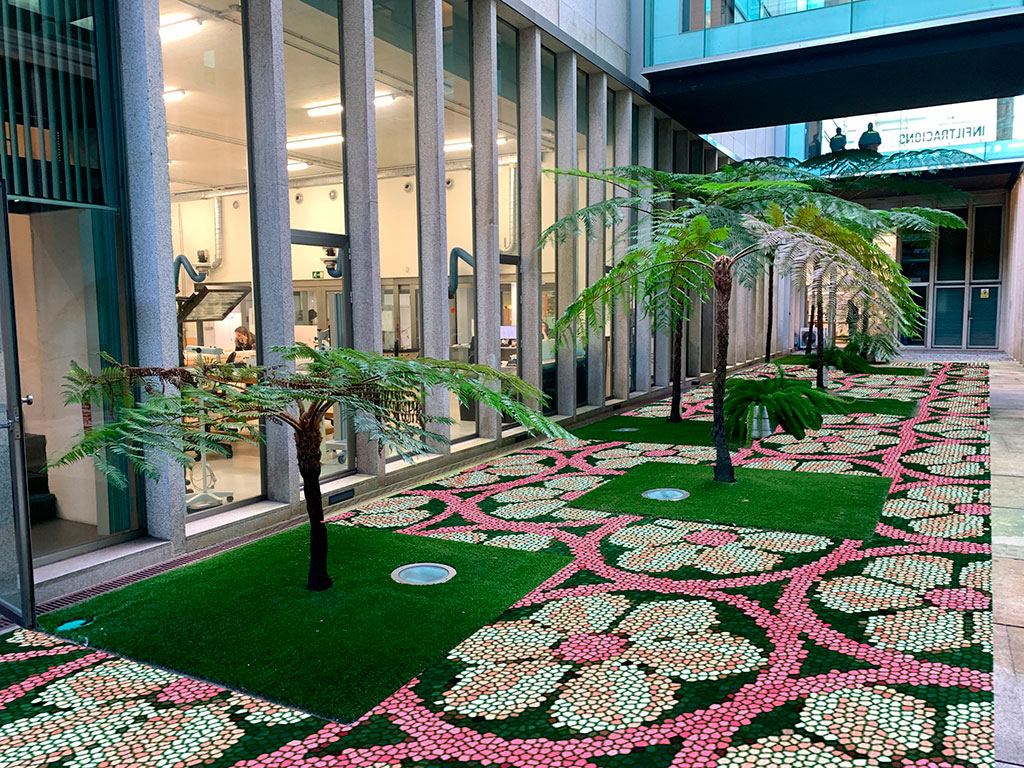Works
Flor de 6 pétalos(Flower with six petals, 2025)
It is part of her series Pintura site (Painting site), which has been developed by Almudena Fernández Fariña since 2002 in different art centres. The intervention consists of a pavement located in the inner courtyard of the Castelao Building, where hundred-year-old ferns are planted. The artist uses the flower as a symbol to reflect on a present of ecological crises, wars and an uncertain future. She is inspired by philosopher Byung-Chul Han when he says that ‘God has given flowers to human beings to alleviate a little of his uncontrollable violence’, suggesting that natural beauty can serve as a refuge from human aggressiveness. Her reference in this work is the six-petal flower, found in the original tympanum of San Martiño Church, which is kept in the Museum of Pontevedra. This motif, rooted in pagan tradition, has been used throughout history as a symbol of protection and divinity. San Martiño's tympanum, referred to in her work, shows, on its front side, the image of Saint Martin inside a mandorla, supported by two angels. On the back side, there are two circles with six-petal flowers, emphasising the symbolism of creation, divinity and eternity. Through this symbol, Fernández Fariña establishes a connection with the history of the place and invites us to reflect on human fragility and hope in times of crisis. The six-petal flower, which has been present since the Bronze Age in different civilisations, has been interpreted in different ways throughout history, but has always been seen as an emblem of the sun, creation and eternity. With her work, the artist makes a connection between past and present, in an attempt to find hope and resilience in the face of today's adversities.



